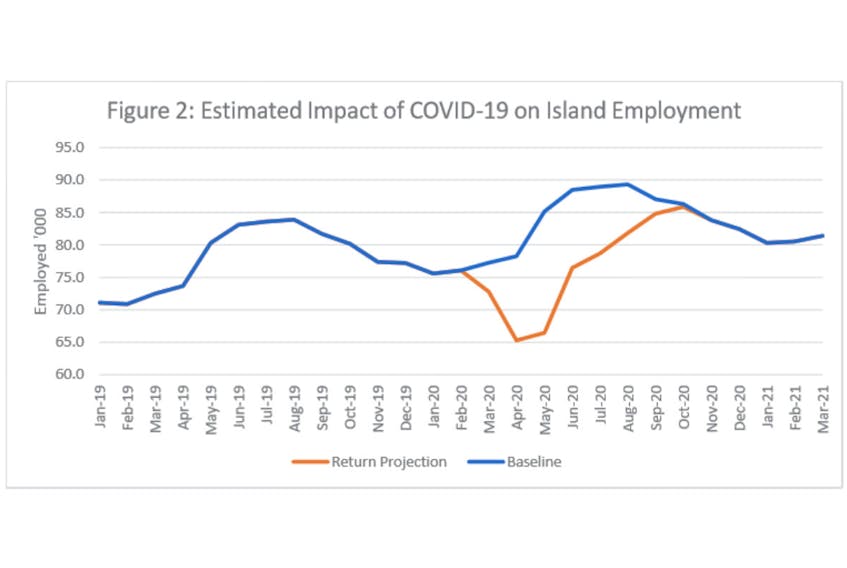The province’s updated economic projections suggest the Island could see 23,900 out of work as of the end of this month due to the coronavirus pandemic.
This total is 3,700 more than a previous projection released by the Department of Finance in April.
The Province also revealed that a total of $225 million has been borrowed since the beginning of the pandemic.
The month of May is expected to see the largest levels of unemployment as the economy begins to restart over June and into the summer months. Public health restrictions have started to be eased with retail businesses already reopening and restaurants and other businesses are expected to resume operation in June.
"May continues to be the month most impacted by the restrictions, with the potential for 23,900 people to be unemployed and an unemployment rate of 26.4 per cent as the seasonal hiring that normally COVID-19 begins in May does not happen," the report says.
This appears to be somewhat of a worst case scenario.
The specific projections from the Department of Finance show 18,700 fewer jobs on P.E.I. than its baseline estimate. By June, this is projected to drop to 12,000 followed by around 10,000 fewer jobs in July and 7,400 fewer jobs in August. By September this number is expected to diminish to 2,300 before returning to more or less expected levels by October.
In April, the province had projected job losses to shrink dramatically by June, almost disappearing entirely by August.
“As with prior estimates, accommodation and food services, arts, entertainment and recreation and retail trade are the sectors most impacted by employment losses over this period,” Tuesday's economic update stated.
Provincial COVID-19 relief spending so far:
- $44,679,600 support to individuals
- $39,036,000 supports for businesses
- $14,363,100 additional supports for healthcare
- $2,260,000 – Student loan deferrals
- $208,000,000 property tax deferrals for Islanders
- $110,990,000 in loan and lease deferral programs for businesses
Source: Government of P.E.I.
Tourism operators are expecting a particularly weak year in 2020. It remains unclear when travel restrictions will be eased, but Premier Dennis King suggested a “bubble” involving unrestricted travel between New Brunswick, Nova Scotia and P.E.I. could begin in July.
A spokesperson from the Province also revealed that the Province has borrowed a net total of $225 million since March 16, with $100 million through short-term borrowing. A total of $125 million will be through long-term markets and is intended to re-finance a debenture that will mature in the Fall
The province calculates its unemployment rate based on expected job growth during the high season in the summer. As a result, the province considers the official unemployment rate as of April to be at 15.2 per cent. This is higher than the 10.8 per cent unemployment rate determined by Statistics Canada’s Labour Force Survey for April, which does not factor in seasonal job growth to the same degree.
But the number of jobless Islanders is likely higher, as those not currently looking for work are not included in the Statistics Canada unemployment rate.
Overall projections from private sector organizations predict a drop in the province’s GDP of between three per cent and 8.1 per cent in 2020. These same projections suggest a rebound of the economy in 2021, with GDP growth between 3.3 per cent and 6.7 per cent.
Although population growth will likely dip in the current period, the province expects to see population growth return to normal level by late 2021.
The update also included a tally of spending on COVID-19 relief programs. The province has so far dispersed close to $45 million in spending for individuals and almost $40 million in spending for business relief. Over $14 million has been spent in additional support for the healthcare system related to the COVID-19 pandemic. Almost $8.5 million of this has been spent on procurement of personal protective equipment.
A program that deferred property tax payments will mean a temporary loss of $208 million in revenue, while other loan and tax deferral programs for businesses will cost more than $110 million.
The economic update did not include comprehensive information on program revenue from the federal government since the start of the pandemic.









